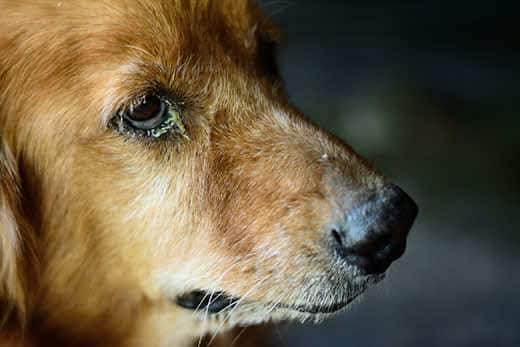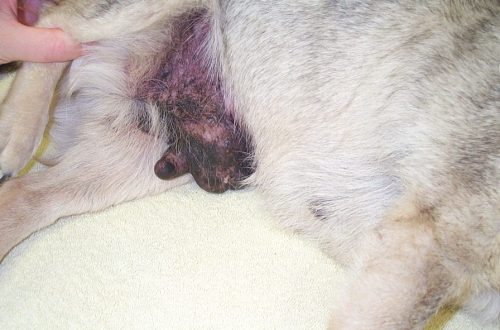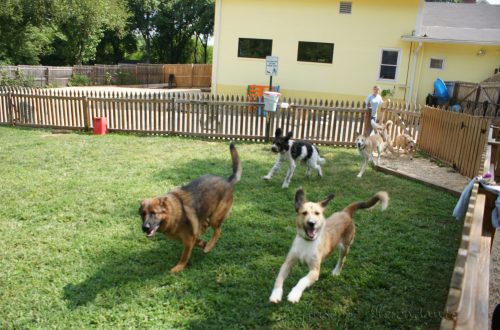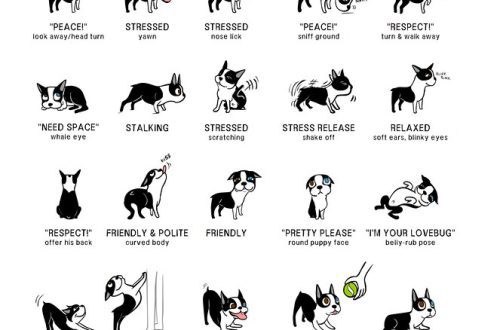
Dog Eye Boogers, Goop & Gunk: When Should You Be Concerned?
If you noticed gunk in your dog’s eye and found yourself Googling, «My dog’s eye is goopy» you’re not alone. Dog eye discharge is a common problem in our canine companions, especially in small dog breeds. The causes of a dog’s goopy eye range from mild, transient issues like allergies to serious conditions like glaucoma that can cause blindness. Here’s what to do about eye gunk and when to be concerned. Dogs with short faces and bulging eyes are at risk for eye diseases and/or trauma to their eyes so evaluation by your veterinarian may be an important next step if your dog has signficant eye discharge.
Contents
What Causes Dog Eye Discharge?
Tears keep eyes healthy; they provide nourishment, oxygen and hydration to the eye’s outer layers and remove debris from the eye’s surface. In a normal eye, tears are made by tear glands and wash over the eye to clean and hydrate it, and then drain out through tear ducts located at the inner corner of the eye.
Sometimes, debris will accumulate in the corner of the eye, commonly called eye gunk, goop, boogers or crusts. A small amount of light brown crusts is normal and usually seen in the morning, right after a dog wakes up. Your dog should have about the same amount of this eye crust every day, and their eyes should be clear, open and free of discharge the rest of the day. If you notice a change in your dog’s eye discharge or if you notice swollen, red eyes or squinting, call your veterinarian.
What Does the Eye Discharge Color Mean?
If you’re concerned about your dog’s eye discharge, take note if it is around the eye or if it is sticking to the surface of the eye and note the color:
- Clear or watery eye discharge: This discharge may be caused by allergies, environmental irritants such as pollen or dust, something in the eye, blocked tear ducts, blunt trauma to the eye or wounds to the eye’s surface. Anatomical abnormalities, such as bulging eyes in smaller brachycephalic breeds like pugs and pekingese, and breeds with eyelids that roll in or out can also cause watery eye discharge.
- Dark red/brown eye stains: These stains are often seen in dogs that have chronic tearing due to the structure of their eye socket or a blocked tear duct. The staining is due to porphyrin, a compound found in tears that turns red/brown when exposed to oxygen.
- White eye discharge: This discharge may also be due to allergies, irritants or anatomical abnormalities. Conjunctivitis, or inflammation of the tissues around the eye, and keratoconjunctivitis sicca (KCS), or dry eye, are also conditions that can cause white discharge. KCS causes a dog to stop making normal tears, which then causes the eye to dry out and white ocular discharge to occur. If you notice white discharge in your dog’s eye and/or if the discharge is sticking to the surface of the eye, call your vet for recommendations.
- Green or yellow eye discharge: This discharge is often due to a bacterial infection in the eye. Colored discharge is seen in infections, corneal ulcers, infected KCS or infected wounds on the eye’s surface. These conditions require antibiotics to treat.
When You Should Call the Vet
If your dog’s eye is goopy you should also be thinking «Should I contact my veterinarian?». In general, if your dog has watery, clear eye discharge for a day or two but their eyes look otherwise normal and they are not scratching the eye and are keeping their eyelids open, it is likely nothing to be worried about. Reach out to your vet if your dog has watery eye discharge that lasts more than a few days or if you notice any of the following:
- Red eye(s)
- Swollen eye(s)
- Rubbing of the eye(s)
- Squinting or excessive blinking
- Head shy behavior
- Colored eye discharge
How to Clean and Prevent Crusty Eyes
If your dog’s eye is goopy and you’d like to clean it there are a few things to know. To properly clean up your dog’s goopy eye, you’ll need cotton balls, rounds or squares and saline — contact lens saline solution or over-the-counter eye wash usually works fine. First, moisten the cotton ball with saline, and then hold it on your dog’s eyelids for a few moments to soften the crusts. Once they’re soft, use the cotton ball to gently wipe the crust away. If your dog’s eye is glued shut with gunk, you may need to repeat this several times to remove all the crusts, or start by applying a warm, wet washcloth to soften the crusts. If your dog doesn’t like having their eyes cleaned, try distracting them by smearing peanut butter or spray cheese on a lick mat or toy, and letting them lick the treat while you clean their eyes.
If your dog’s eye is goopy you will want to promptly address any eye discharge and enlist your vet’s help if you don’t know what’s causing the problem or how to fix it. Though many causes of eye discharge in dogs aren’t serious, some are and can cause blindness if not addressed promptly by a vet. And if you have a small breed dog that has chronic red-brown tear staining around their eyes, several supplements and cleaning wipes are specifically designed to help reduce this problem.





